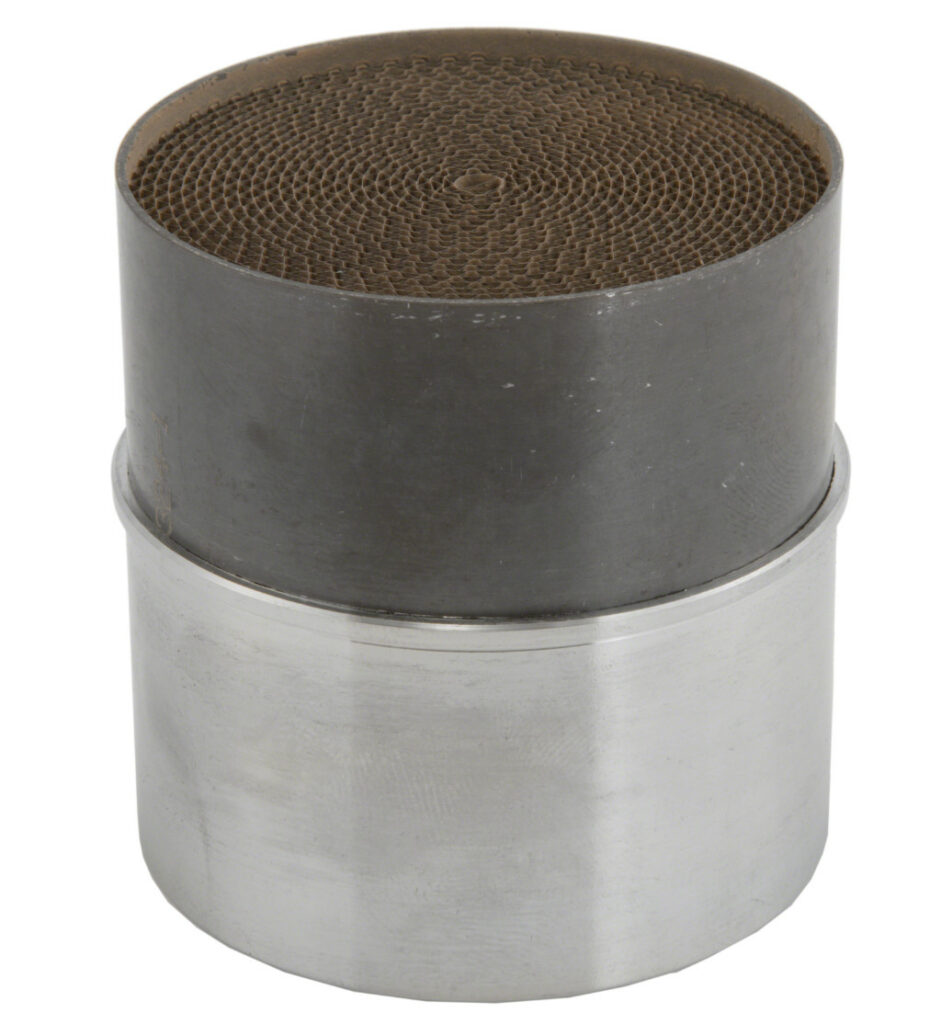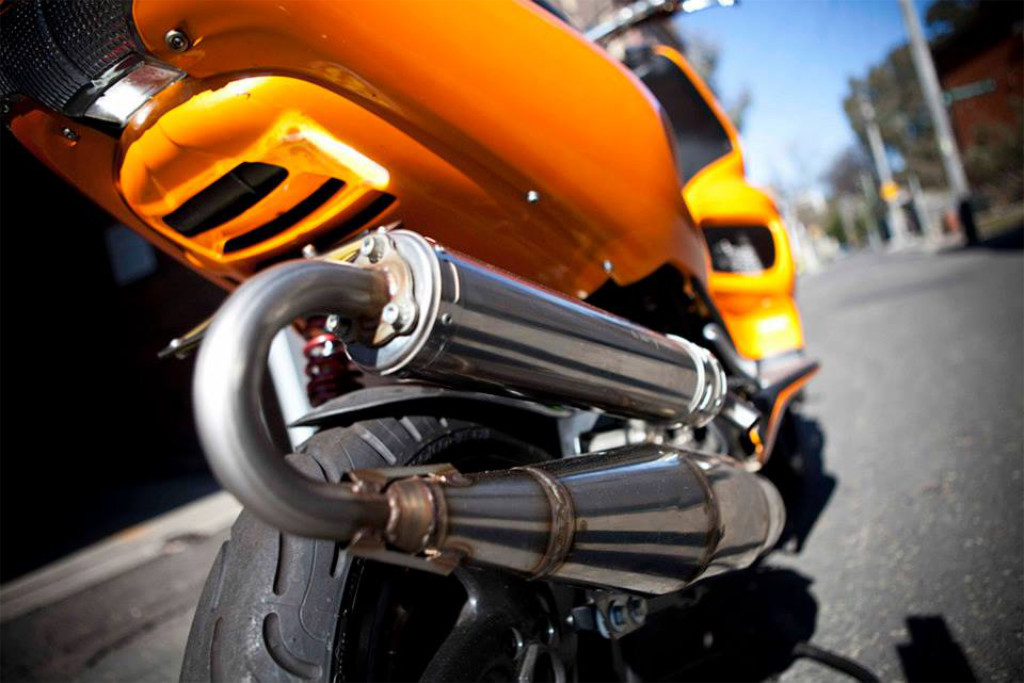Probably everyone has heard of it: the catalytic converter. But only very few Vespa riders know what the catalytic converter is really responsible for. Due to the relatively new technology, catalytic converters were only installed in the newer Vespa models. This also makes sense, as a catalytic converter is primarily used to comply with the limit values required for an exhaust emission test. This test, or AU for short, is only required for light motorbikes and motorbikes registered after 01.01.1989.
Structure as the key to success
The catalytic converter consists of several different components. These components are coated with special precious metals to filter the burnt pollutants from the engine. There are many thin channels in the catalytic converter, most of which are coated with aluminium oxide. These thin channels have a rough surface so that the surface area is increased to absorb the pollutants. These channels contain various precious metals such as platinum or palladium. From these channels equipped with precious metals, there is in many cases a connection possibility for the lambda probe via a ceramic carrier. As a sensor, the probe detects the composition of the mixture and thus measures the residual oxygen content of the exhaust gas. This information is then passed on to a control unit and enables an adapted mixture feed.
Many chemical processes
The name of the catalytic converter comes from its chemical process. In layman’s terms, it is based on very complex catalytic reactions. Pollutants such as hydrocarbons, carbon monoxide and nitrogen oxides are converted by oxidation or by reduction to the unproblematic substances carbon dioxide, water and nitrogen. At high engine operating temperatures, almost 100% of the exhaust gases can be converted in this way.
Three-way catalytic converter for Vespas
Due to constantly changing requirements for environmental protection and exhaust emissions, catalytic converters are constantly being further developed. Especially in recent years, many new types of catalytic converters have been developed. However, the original three-way catalytic converters were and are still used in all Vespas. The name of the type comes from the conversion of the three air pollutants mentioned above. The prerequisite for this is the constant supply of a constant petrol-air mixture, which is produced by the carburettor. In order to achieve an optimal conversion of the substances, the lambda-1 value must be maintained. This is given when the mixture consists of 14.7 parts air and one part fuel. The lambda sensor takes over the measurement of the mixture and controls the feed.

Excellent upgrade solutions for many models
While the lambda sensor and the catalytic converter – as mentioned at the beginning – are installed in newer models anyway, all older models lack such a control option. In the meantime, there are special lambda sensors for retrofitting, which can be retrofitted in combination with the SIP rev counter on almost all wide, large and small frame models.
There, the combustion air ratio is automatically displayed and shows whether the Vespa is running too rich or too lean without annoying unscrewing of the spark plug or countless test drives. Even though the catalytic converter can no longer be retrofitted in older models, retrofitting a lambda sensor is a good way to reduce exhaust emissions.
For newer models, there are various suppliers who offer special catalytic converters for retrofitting. The catalytic converter is simply inserted into the intermediate pipe and is immediately ready for use without further adjustment. In this way, the required exhaust emission values can be met without having to sacrifice performance at the same time. Approval is also not jeopardised by the approved retrofit catalytic converters.
In times of increasingly questionable exhaust values, catalytic converters offer a simple way to drastically reduce scooter emissions. In the coming years, the focus will also be on shortening the starting phase even further. In the first few minutes after starting, most exhaust gases are emitted because the engine has not yet reached operating temperature and the catalytic converter is not yet working.
To ensure that future generations can still have fun with what is perhaps the most beautiful scooter in the world, a functioning catalytic converter should always be available.



